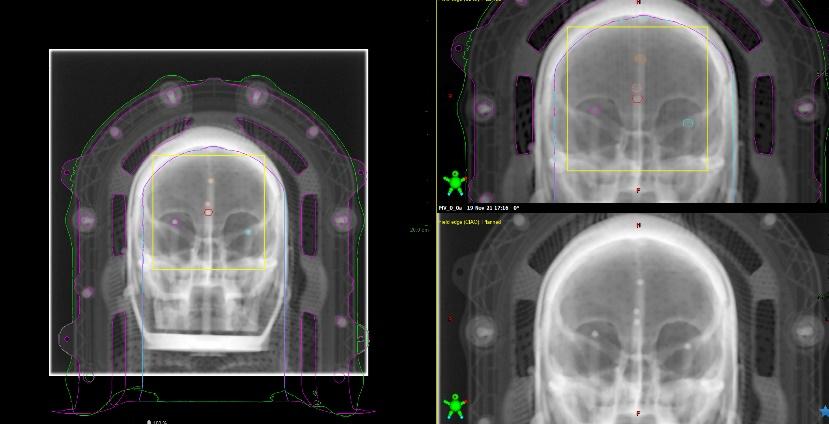RTsafe October 2022

In advanced Stereotactic Radiosurgery (SRS) treatments, the role of the Surface Guidance systems is very important and becomes vital for the safe and efficient implementation of each clinical procedure. The accurate and precise patient positioning in the treatment couch for a single fraction or hypofractionated SRS applications, as well as the accurate patient monitoring during the dose delivery, can be achieved with advanced Surface Guidance Radiation Therapy (SGRT) techniques minimizing patient dose derived from x-ray, Cone Beam Computed Tomography (CBCT), kV and MV imaging. SGRT systems combine high-end technology with sophisticated software aiming to improve the treatment outcome and make more efficient the SRS treatment protocol. Specifically, the most recent integrated SGRT systems provide surface optical imaging with cutting-edge optical cameras combined with mounted light sources detecting the patient’s 3D surface structure.
However, the more advanced the hardware and software used by these systems are, the higher level of complexity is introduced and subsequently, End-to-End verification is mandatory. International committees and task groups strongly recommend the implementation of End-to-End tests during the commissioning and/or periodic Quality Assurance (QA) of SGRT systems. The complexity that hybrid systems have introduced leads to the need for more realistic simulation of the clinical procedure during End-to-End testing. If we can summarize the main goal of QA in SRS with SGRT applications is the verification of the precision on localization and accuracy on dose delivery.
RTsafe following the trends in modern SRS is continuously developing adapted solutions to the most demanding QA needs. Specially designed anthropomorphic head phantoms have been modified and equipped accordingly to be used for the End-to-End evaluation of advanced SGRT systems. The combination of anthropomorphic anatomy and bone/soft tissue equivalency that phantoms offer is a fact that makes them a must-have tool in every radiotherapy department. More specifically, the human-like skin tone of the phantoms with the already unique features of realistic bone/soft-tissue contrast in CT (Computed Tomography) and MR (Magnetic Resonance) imaging and patient-like anatomy make them the best candidate for testing advanced SGRT systems. Moreover, RTsafe’s head phantoms offer the ability to accommodate small metal spheres at predefined locations acting as reference points visible in CT, CBCT, kV and MV imaging. The external surface of the phantoms is modified to provide realistic external morphological characteristics, with dull surfaces minimizing artifacts and unwanted reflections on optical imaging. The end-user has also the ability to evaluate the dosimetric and spatial accuracy of the SRS treatment in an End-to-End manner with a specially modified Prime phantom that offers point (ionization chamber and solid-state detectors), 2D (film), and 3D (gel).


At RTsafe we have a clear strategy; safer and more efficient SRS treatments will benefit patients ensuring a better treatment outcome, medical personnel allowing them to gain confidence in adopting new techniques, and clinics boosting and safeguarding their brand name. Our team is always ready to work with you and support you.
For more information visit www.rt-safe.com or email [email protected]
